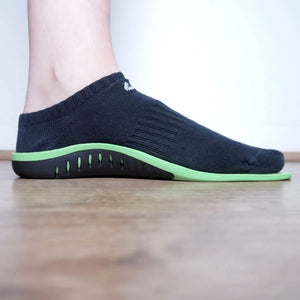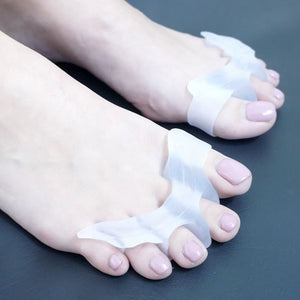5 Best Bunion Exercises

A bunion is a foot deformity which can develop when the toes are too constrained – usually as a result of wearing tight fitting footwear – forcing the big toe to push against the other toes. This causes the bone of the big toe to protrude and swell up, forming a large bump on the side of the foot.
Bunions can cause an intense pain in the foot which can eventually lead to arthritis. Fortunately most bunions can be managed without surgery. We have detailed a list of the some of the best bunion exercises which can help to relieve symptoms of the condition and increase flexibility in the foot.
Why Exercise
Exercises for bunions do not actually get rid of the bunion itself, however, they can slow down the progression of the condition.
A bunion is a biomechanical deformity but non-surgical strategies can be helpful in managing the condition and preventing the arthritic type of pain which can develop within the joint of the bunion.
Certain exercises and toe stretches can help to keep the joints between the big toe and the rest of the foot mobile, which aids in maintaining foot flexibility and in strengthening the muscles which control the big toe.
In fact, foot exercises after bunion surgery are also encouraged once the healing process is complete, in order to prevent a bunion or pain from reoccurring.
Best Exercises For Bunions
If you have any other health conditions that may be affected by light exercise, it is recommended consult with a podiatrist or physiotherapist before starting the following exercises. The following exercises can help you strengthen your foot which can reduce symptoms of a bunion:
1. Toe Stretches
This is a simple exercise that you can do to help keep your feet limber and offset any foot pain as you are sitting. Aim to repeat these stretches for at least 10 times a day.
- Point your toes straight ahead for a few seconds
- Then curl them under and hold for a few seconds
- Perform this for 2-3 minutes per session
2. Toe Flexing and Contracting
You can do this easy exercise as you are sat on the floor facing a wall. Aim to repeat this exercise 3 to 4 times daily.
- Press your toes against a wall to flex and stretch them. Hold this position for at least 10 seconds and then repeat twice more.
- Now flex your toes in the opposite direction and hold the position again for at least 10 seconds. Repeat this pose twice more.
3. Ball Roll
This fun exercise can massage the sole of your foot and relieves foot strain and cramping. You can repeat this exercise for as long as you like to strengthen the foot muscles as you control the ball.
- Place a hard ball on the floor under your foot
- Roll the ball back and forth between the ball of your foot and your heel
The ball roll exercise is ideal for a foot massage as it helps you focus on areas which are feeling more painful and tight. Alternatively, you can perform this with a foot roller too.
4. Towel Scrunch
You can do this exercise whilst seated on a chair and only require a towel for it. Aim to repeat the exercise for at least 10 repetitions per session; once you are confident with towel scrunches you can increase your daily repetitions.
The towel scrunch strengthens muscles in the sole of the foot and can correct the muscular imbalances that can cause the development of a bunion.
- Place a towel flat on the ground in front of your bare foot
- Keeping your heel in contact with the ground, draw the towel towards yourself as you scrunch your toes
5. Marble Pick-Ups
Another fun and easy exercise to do which doesn’t take long to complete is the marble pick-ups. Try to spend at least 5 minutes a day with each foot doing this exercise as it can help strengthen the tibialis anterior muscle which runs along the sole of the foot, as well as improving your foot co-ordination.
- Scatter a handful of marbles close to your feet and place an empty bowl next to them
- Using just your toes, pick up each marble and drop it into the bowl
Final Tips | Best Bunion Exercises
Try to perform these foot exercises for bunions every day; ideally twice a day – once in the morning and again at night. These exercises can easily be incorporated into a daily routine, such as when you’re watching television or sitting at your office desk.
Other non-surgical methods to reduce bunion related foot pain include:
- Wearing well-fitting footwear which has a wide toe box
- Shoe inserts to help position the foot in a more comfortable position
- Pain can also be managed with pain relief medication
- Gel pads and sleeves can protect the bunion while wearing footwear
- Massage your feet on a regular basis to relieve muscle tightness that can contribute to the formation of bunions.
It is generally considered safe to resume foot exercises 3 weeks after bunion surgery. If you would like more information regarding foot pain or a custom plan of the best bunion exercises for you, then get in touch with a podiatrist or a physiotherapist for professional guidance.




Leave a comment